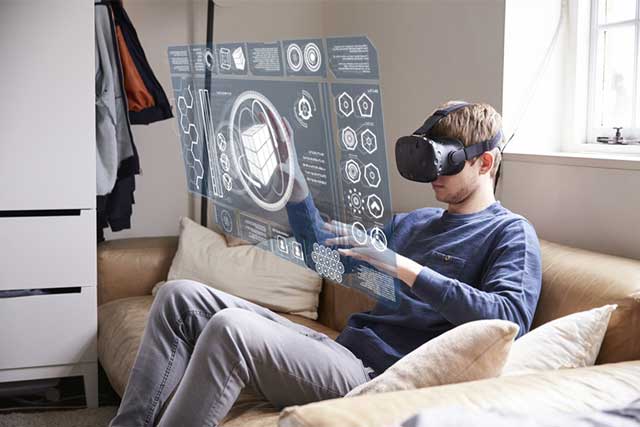The Future of VR in the Workplace
Virtual Reality (VR) and Augmented Reality (AR) are reshaping the way organizations work, train, and innovate. These immersive technologies are no longer futuristic concepts—they are actively transforming workplaces today. In fact, 26% of organizations already use VR and AR for training, contributing to a global VR learning market that grew nearly 38% in 2022.
What are VR and AR?
- VR creates fully simulated environments that users can explore and interact with.
- AR overlays digital information onto the physical world.

Both technologies deliver immersive learning and working experiences, driving higher engagement, skill development, and knowledge retention compared to traditional methods. By offering realistic simulations, VR enables employees to practice decision-making in safe, controlled environments—preparing them for real-world challenges. These tools also reduce the need for physical training facilities, enable remote access, and allow organizations to scale learning programs without losing quality.
How VR and AR Are Transforming the Workplace
The integration of immersive technologies is having a profound effect on productivity, collaboration, and engagement.
- Immersive Focus – A strong sense of presence helps employees stay engaged, improving concentration and efficiency.
- Natural Interactions – Virtual objects and data can be manipulated with intuitive gestures, streamlining workflows.
- Remote Collaboration – Teams can meet in shared virtual environments, overcoming geographic barriers while saving time and resources.
- Inclusivity – VR and AR provide new opportunities for individuals with disabilities or social anxieties to participate fully, bringing diverse perspectives to projects.
Current Applications of VR and AR
- Healthcare – Surgeons and medical professionals rehearse complex procedures in virtual operating rooms, gaining confidence and reducing risk.
- Aviation, Manufacturing & Defence – Pilots, industrial workers, and military personnel train in safe simulations, practising high-stakes scenarios without danger.
- Product Development – Designers use VR to build and test prototypes virtually, gather user feedback, and refine products before physical production.
What’s Next for VR and AR in the Workplace?
- Immersive Training – VR and AR deliver dynamic, hands-on simulations that go far beyond lectures or videos. New hires can complete virtual walkthroughs of workplaces before day one, while employees can practice emergency responses in safe, high-pressure simulations.
- Enhanced HR Practices – Virtual job fairs and VR-based interviews expand access to candidates, while immersive assessments allow employers to evaluate skills in realistic scenarios.
- Stronger Collaboration – VR workspaces replicate physical offices, making remote teamwork more natural. Avatars enable real-time co-creation, fostering innovation and deeper engagement.
- Efficient Product Development – Virtual prototypes speed up design cycles, reduce costs, and allow for real-time adjustments—leading to better, faster product innovation.
- Immersive Data Visualization – VR transforms data into interactive 3D environments, revealing insights that static graphs may miss. Teams can explore data collaboratively, improving analysis and decision-making.
- Customer Experience Innovation – Virtual showrooms and AR product demos let customers interact with products in realistic settings, making purchase decisions easier while expanding businesses’ global reach.
The Future Is Here
VR and AR are not just future possibilities—they are actively redefining the workplace today. As these technologies become more accessible, organizations that adopt them will unlock new levels of innovation, collaboration, and inclusivity. From onboarding and training to collaboration, product design, and customer engagement, immersive technologies are creating workplaces where creativity thrives and barriers are broken down. Forward-looking companies that embrace VR and AR now will be better equipped to stay competitive, attract top talent, and deliver exceptional experiences for both employees and customers.